Data:
df1 <- structure(list(Index = 1:11, Duration = structure(c(1487577655,
1487577670, 1487577675, 1487577680, 1487577685, 1487577680, 1487577700,
1487577705, 1487577695, 1487577700, 1487577680), class = c("POSIXct",
"POSIXt"), tzone = "")), .Names = c("Index", "Duration"), class = "data.frame", row.names = 3:13)
Now I construct the graph as follows:
g1 <- ggplot(df1, aes(x = Index, y = Duration, color = Duration))+
geom_point()+
geom_line()+
scale_y_datetime(labels = date_format("%M:%S"))
As it is now, the color scale is set to the default "Black" to "Blue" gradient.
The problem is, I get an error trying to assign a custom gradient to the data.
For a non-POSIXct object:
scale_color_gradient("Duration", low = "#D80427", high = "#07a0ff", space = "Lab")
works, but I get the following error with the POSIXct object df1$Duration as the explanatory variable:
Error in Ops.POSIXt((x - from[1]), diff(from)) : '/' not defined for "POSIXt" objects
Is there a different gradient function I need to use when graphing a POSIXct object?
